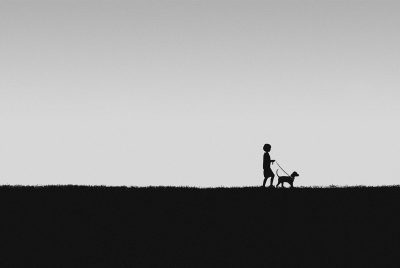How to Take Sharp Photos Every Time
Why Sharpness is the Key to Great Photography
Sharpness is often the difference between a snapshot and a professional-looking image. You can have amazing composition and perfect lighting, but if your photo is blurry, the impact is lost. Learning how to take sharp photos every time with DSLR is about control—over your settings, your technique, and your gear.
>>> See TODAY’s deals on DSLR camera offers HERE <<<
The Difference Between Sharp and Soft Images
A sharp photo draws the viewer’s eyes immediately to the subject. A soft or blurry photo, on the other hand, feels unpolished and distracting. The good news? Sharpness isn’t just luck—it’s a skill you can master.
Why Beginners Struggle with Sharpness
Most beginners assume autofocus will always nail it. In reality, things like shutter speed, aperture, lens choice, and even hand movement all play a role.
Camera Settings that Improve Sharpness
Getting tack-sharp photos starts with knowing your camera inside and out. Settings are your foundation.
Choosing the Right Shutter Speed
The faster the shutter speed, the less chance of motion blur. This is especially important for moving subjects like people, wildlife, or sports.
The “Reciprocal Rule” for Handheld Shots
A good rule of thumb: your shutter speed should be at least 1 over your focal length. So, if you’re shooting with a 100mm lens, aim for 1/100s or faster.
Using the Correct Aperture
Wide apertures (like f/1.8) give shallow depth of field, which can look artistic but unforgiving if you miss focus. For sharper shots, try f/5.6–f/8 where lenses usually perform best.
Finding the Right ISO for Clean Shots
Higher ISO means more noise, which can soften details. Stick to the lowest ISO you can for sharp, clean images, especially in daylight.
How to Focus Correctly Every Time
Autofocus is powerful, but it’s not foolproof. Understanding how to control it makes a huge difference.
Single Point vs Multi-Point Autofocus
Single point AF gives you precise control, perfect for portraits. Multi-point AF is better for fast-moving subjects where you need flexibility.
Back Button Focus Technique
Separating focus from the shutter button lets you lock focus once and recompose without refocusing every shot. It’s a game-changer for consistency.
When to Use Manual Focus
In tricky low-light situations or when shooting macro photography, manual focus helps you fine-tune sharpness.
Stabilizing Your Camera for Tack-Sharp Shots
Even the best settings won’t save you if your camera shakes. Stabilization is key.
Benefits of Using a Tripod
Tripods eliminate hand shake, making them perfect for landscapes, long exposures, or night photography.
Image Stabilization (IS/VR) Features
Many modern lenses and cameras have built-in stabilization. Turn it on when handholding, but switch it off when using a tripod.
Proper Handholding Techniques
Keep elbows tucked in, feet shoulder-width apart, and gently squeeze the shutter button. Think of yourself as a human tripod.
Lenses and Gear that Affect Sharpness
The lens you use can make or break image sharpness.
>>> See TODAY’s deals on DSLR camera offers HERE <<<
Why Lens Quality Matters
A cheap kit lens will never match the sharpness of a high-quality prime or pro-grade zoom. Investing in glass often matters more than upgrading your camera.
Using Prime Lenses for Maximum Sharpness
Primes (like 50mm f/1.8) have fewer moving parts and often produce sharper images compared to zooms.
Cleaning and Maintaining Your Lens
Even the best lens won’t perform well if it’s covered in smudges or dust. A quick microfiber wipe can save a photo.
Light and Composition’s Role in Sharp Photos
Light affects not only exposure but sharpness perception too.
Shooting in Good Lighting Conditions
Good light means you can shoot with lower ISO and faster shutter speeds. Golden hour is especially forgiving for sharp, detailed shots.
Avoiding Motion Blur in Low Light
If you can’t raise shutter speed enough, consider a tripod or use external light sources to freeze the subject.
Post-Processing for Extra Sharpness
Even sharp photos can benefit from subtle editing.
Sharpening in Lightroom or Photoshop
Lightroom’s “Detail” panel or Photoshop’s “Unsharp Mask” can enhance edges and textures. The trick is to apply sharpening selectively.
Avoiding Over-Sharpening Pitfalls
Push too far, and images look crunchy or artificial. Always zoom in 100% when sharpening to avoid artifacts.
Common Mistakes That Cause Blurry Photos
Let’s face it—sometimes blur is our fault. Recognizing mistakes is half the battle.
Wrong Shutter Speed Choices
Too slow a shutter, and no amount of steady hands can save the shot.
Camera Shake and Poor Technique
Jerky button presses and unstable stances are common culprits for softness.
Dirty Lens or Sensor Issues
A dirty lens or sensor smears detail. Regular cleaning is essential for sharp photography.
Practical Tips for How to Take Sharp Photos Every Time with DSLR
Let’s tie everything together into actionable advice.
Practice with Static Subjects First
Don’t start with sports or wildlife. Practice with still objects to nail focus and settings.
Mastering Focus Before Composition
Sharpness comes first, framing second. Nail the focus, then worry about perfect composition.
Building Habits for Sharp Photography
Hold your camera properly every time, double-check shutter speed, and always review shots at 100% zoom to learn from mistakes.
Conclusion
Sharpness isn’t luck—it’s a skill. By controlling shutter speed, mastering focus, stabilizing your gear, and paying attention to light, you can learn how to take sharp photos every time with DSLR. The more you practice, the more consistent your results will be, until sharp photos become second nature.
>>> See TODAY’s deals on DSLR camera offers HERE <<<
FAQs
1. What’s the biggest reason photos come out blurry?
Usually, it’s too slow a shutter speed. Camera shake is the most common cause of blur.
2. Do I always need a tripod for sharp photos?
Not always. With fast shutter speeds and good handholding technique, you can get sharp shots handheld.
3. Should I always use manual focus?
No, autofocus works great in most cases. Manual focus is best for low light or macro photography.
4. Does lens quality really affect sharpness that much?
Yes. Higher-quality lenses produce sharper images with better contrast and detail.
5. Can post-processing fix a blurry photo?
Not really. Sharpening tools can enhance edges, but they can’t fix motion blur. Get it right in-camera first.




